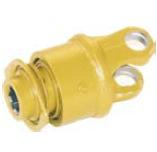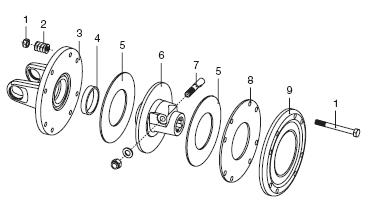Types and functions For a more detailed explanation see http://www.drive-lines.com/index_clutches.html. Different applications require different types of torque protection. When working properly, these devices can make a huge difference in production and efficiency. When worn or otherwise not working, they are akin to achors chained to your ankle. As with PTO shafts in general, torque devices are generally misunderstood, under maintained, and abused. Some of these devices, such as radial pin clutches and overrunning devices, require minimum maintenance. Others, such as friction clutches, need a constant watch. For the purposes of this article we will address the three most popular units. |
FRICTION CLUTCHES:
|
Shear Bolt Yokes
|
Overrunning Devices
|
| PTO Application Data Sheet |  |





